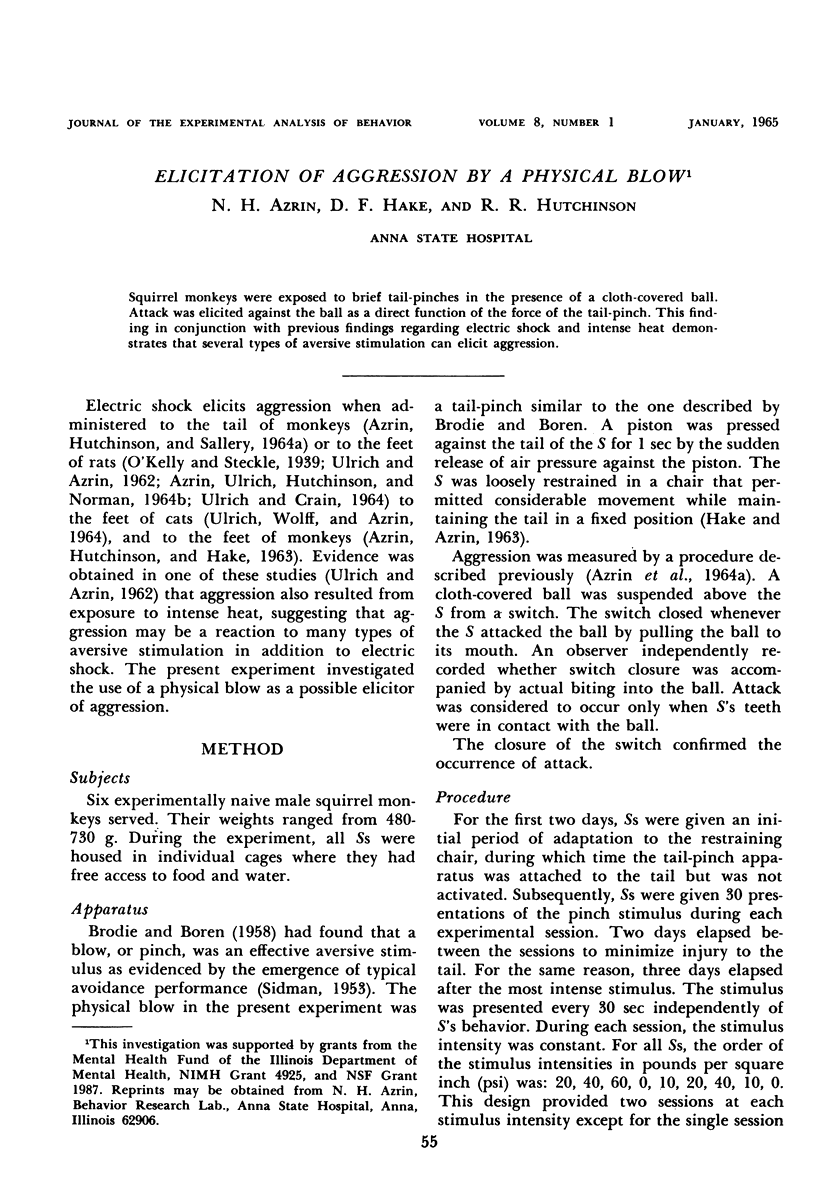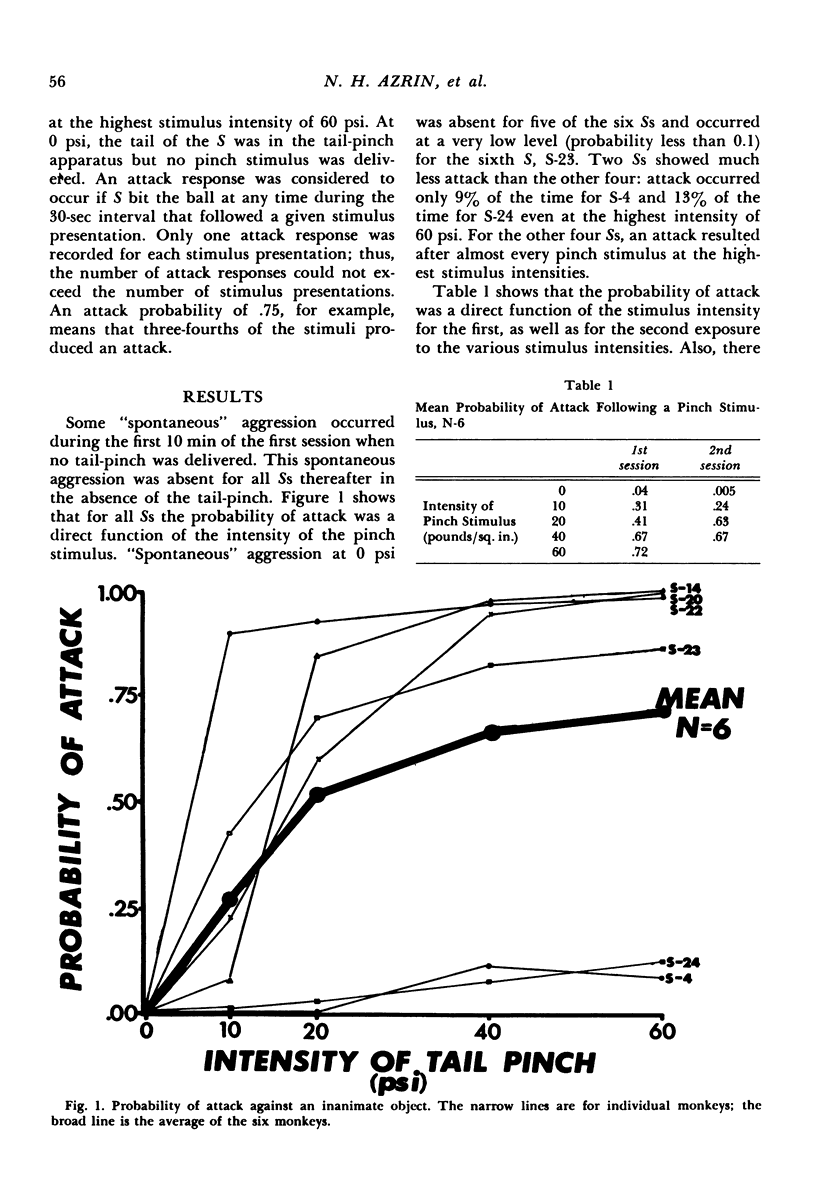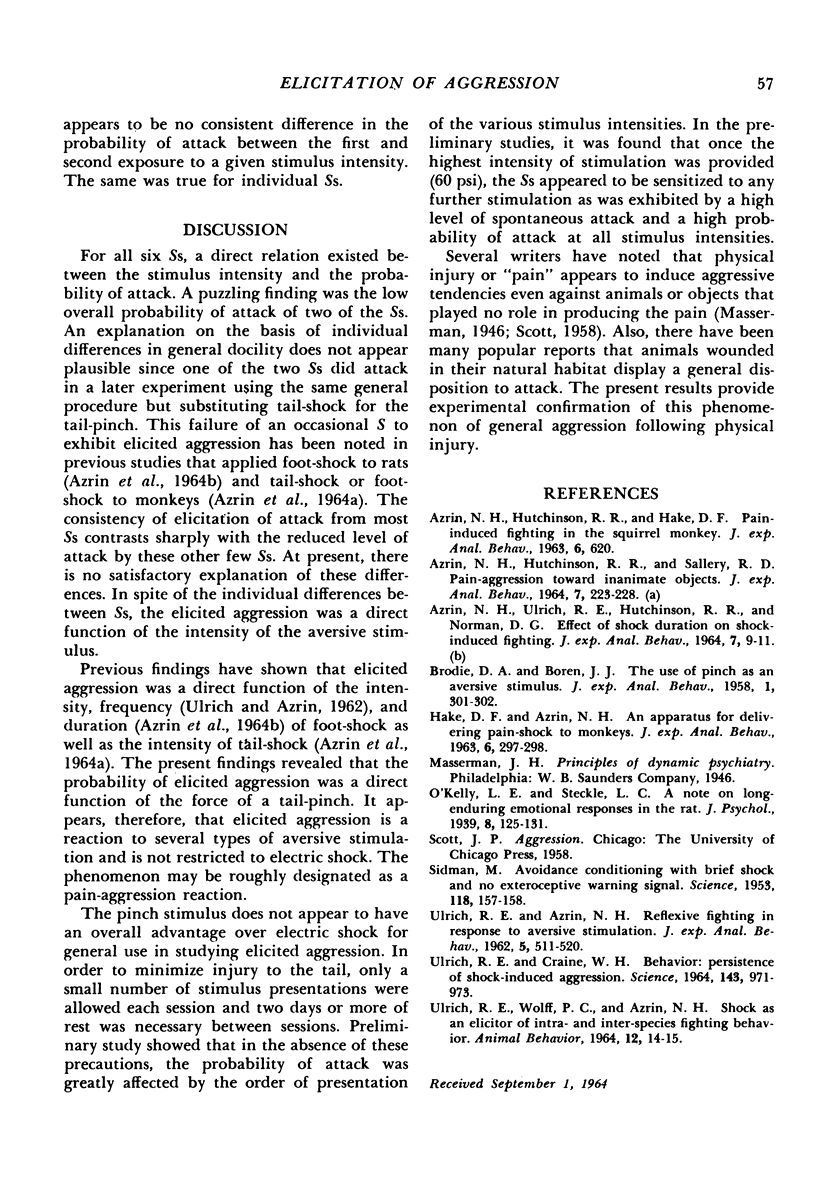Abstract
Squirrel monkeys were exposed to brief tail-pinches in the presence of a cloth-covered ball. Attack was elicited against the ball as a direct function of the force of the tail-pinch. This finding in conjunction with previous findings regarding electric shock and intense heat demonstrates that several types of aversive stimulation can elicit aggression.
Full text
PDF


Selected References
These references are in PubMed. This may not be the complete list of references from this article.
- AZRIN N. H., HUTCHINSON R. R., HAKE D. F. PAIN-INDUCED FIGHTING IN THE SQUIRREL MONKEY. J Exp Anal Behav. 1963 Oct;6:620–620. doi: 10.1901/jeab.1963.6-620. [DOI] [PMC free article] [PubMed] [Google Scholar]
- AZRIN N. H., HUTCHINSON R. R., SALLERY R. D. PAIN-AGGRESSION TOWARD INANIMATE OBJECTS. J Exp Anal Behav. 1964 May;7:223–228. doi: 10.1901/jeab.1964.7-223. [DOI] [PMC free article] [PubMed] [Google Scholar]
- AZRIN N. H., ULRICH R. E., HUTCHINSON R. R., NORMAN D. G. EFFECT OF SHOCK DURATION ON SHOCK-INDUCED FIGHTING. J Exp Anal Behav. 1964 Jan;7:9–11. doi: 10.1901/jeab.1964.7-9. [DOI] [PMC free article] [PubMed] [Google Scholar]
- Brodie D. A., Boren J. J. The use of pinch as an aversive stimulus. J Exp Anal Behav. 1958 Oct;1(4):301–302. doi: 10.1901/jeab.1958.1-301. [DOI] [PMC free article] [PubMed] [Google Scholar]
- HAKE D. F., AZRIN N. H. An apparatus for delivering pain shock to monkevs. J Exp Anal Behav. 1963 Apr;6:297–298. doi: 10.1901/jeab.1963.6-297. [DOI] [PMC free article] [PubMed] [Google Scholar]
- SIDMAN M. Avoidance conditioning with brief shock and no exteroceptive warning signal. Science. 1953 Aug 7;118(3058):157–158. doi: 10.1126/science.118.3058.157. [DOI] [PubMed] [Google Scholar]
- ULRICH R. E., AZRIN N. H. Reflexive fighting in response to aversive stimulation. J Exp Anal Behav. 1962 Oct;5:511–520. doi: 10.1901/jeab.1962.5-511. [DOI] [PMC free article] [PubMed] [Google Scholar]
- ULRICH R. E., CRAINE W. H. BEHAVIOR: PERSISTENCE OF SHOCK-INDUCED AGGRESSION. Science. 1964 Feb 28;143(3609):971–973. doi: 10.1126/science.143.3609.971. [DOI] [PubMed] [Google Scholar]


